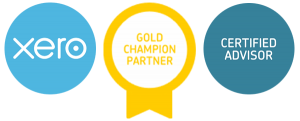


Understanding cashflow
As a small business owner it’s likely you’ve heard the word ‘cashflow’. Understanding and controlling your business’s cashflow is as important as monitoring your pulse.
Cashflow is the heartbeat of a business. It’s a term that describes the movement of money in and out of a business. Put simply, cashflow is the result of how much money comes (income) versus how much leaves (expenditure).
If cashflow is positive, this means more money enters the business than leaves. This is the most stable position as it allows businesses to pay suppliers, bills and continue to cover operational costs. It also offers many advantages to a business, such as being able to quickly take advantage of opportunities such as stock sales or bidding on large projects.
When a business’s cashflow is negative, this means more money is going out of the business then entering, a potentially scary position. Being cashflow negative is no small matter, even profitable businesses can fail as a result of this. This is because if cash is not present in the business, then suppliers can not be paid, arrears build and opportunities get missed.
When it comes to building a better cashflow, there are 4 steps that are vital to success. The 4 steps in this article will help you create a digital & real-time visual of business accounts, make getting paid easier, control the spend of money and utilise cashflow tools to make you better financial decisions. All the while decreasing the amount of stress associated with irregular cashflow.
In this article we’ll go into detail on exactly how to implement each point.
Understanding the flow of data – going digital
When it comes to understanding your business’s cashflow position, it becomes a lot easier if all the data is in one place and up to date. Doing this has never been easier with tools such as Receipt Bank, Xero/ Quickbooks, GoCardless and Pleo.
The first step is consolidating your financial data into one accounts package. There are a multitude of offerings out there, with Xero and Quickbooks being the market leaders. The right accounts software is where all of your business’s financial information should sit. Once done, effective cashflow reports and monitoring can take place.
Once your business has established an accounts package, it’s time to start feeding in financial data. Financial data is anything that relates to your company’s income and expenditure. The easiest way to start feeding data into your accounts package is by setting up a bank feed. Bank feeds will upload the data from your bank into your accounts package. It’s safe and secure. With direct bank feeds, the data is automatically uploaded. No longer needing to source together all those bank statements, saving serious amounts of time.
Once the banking information is uploaded we want to start feeding in some context to give the data value. Adding a data capture app such as Receipt Bank and online invoicing into this process is ideal. Receipt bank takes care of all those receipts and purchases by scanning them and putting the information into your accounts package. Simply get the receipt, take a picture and hit the submit button.
Xero & Quickbooks come with online invoicing functionality that can be done from a mobile. The simple yet sophisticated invoicing system enables businesses to add online payments such as Stripe, which means your customers can receive a digital invoice and pay it there and then. With all of that information automatically updated in your accounts package.
After making these simple changes, all the financial data for a small business is in one, easy to access place. Making it a lot easier to see your cashflow position, which is the first step to improving it.
Getting money into the business more effectively
Late and irregular payments are two of the most common reasons that cause a fluctuation in cashflow. All it takes is for one or two payments to be delayed by a week and cashflow is negatively impacted. Being unable to pay a supplier on time can lead to late fees and a delay in stock being shipped. Resulting in longer term impacts to business and cashflow. As well as this, the time it takes to chase up late payments is something that not many small business owners can afford. Luckily there’s a better, time savvy way to fix late and irregular payments.
Automated invoice chasing. One of the best ways to improve the time it takes to get paid is by increasing communications with clients. However, as a business owner it can be hard to find the time to do this. Luckily thanks to apps such as Chaser and Xero/ Quickbooks invoice reminders, it’s become even easier to follow up client payments. Chaser is an online credit control product that will send personalised invoice reminders to your clients. Both pre and post due date. Sometimes a simple reminder at the right time can be the difference.
Once invoice reminders are set up and the average debtor days are reducing, it’s time to look at controlling the irregularities of payments where possible. Apps such as GoCardless automatically collect payments on your behalf. Whether that be monthly or set instalments over a specific time frame. GoCardless will automatically process payments from your clients on the agreed dates. By trying to consolidate payment dates to within a couple of days and having GoCardless automatically collect these payments, it becomes even easier to get money into the business.
Apps like GoCardless also remove common barriers such as clients having to manually make payments themselves. Less barriers to payment, better cashflow.
Now we’ve established two very simple ways to improve the cash coming into the business, it’s time to look at the money being spent – particularly those day to day expenses.
Controlling money leaving the business
Whilst bringing your financial records up to date and making it easier for clients to pay you is a great starting point, it’s still important to control spending – mainly those day to day expenses.
Many small businesses employ multiple staff and find keeping a real time view of expenses difficult. There’s an all too common scenario that plays out here. It’s approaching the end of a tough month and all of sudden one of your employees has a tonne of unexpected expenses that need reimbursing. Whilst Receipt Bank and other data feeds will offer insights to these expenses, they are post spend.
So how do we control this? Company spend cards are a great way to start. With the likes of Capital on tap, Pleo and Soldo, small businesses can now control spending better than ever. Take Pleo for example. A small business can sign up to Pleo and get individual cards for their employees. There’s a lot of smart technology that sits behind these cards, such as real-time spend controls, including caps on the amount and purpose of purchase. Not only will cards like these control spending at point of purchase, they will push the data into your accounts package, supporting that real-time view we’ve been building.
The simple act of controlling small day to day expenses can have a significant positive impact on cashflow. Business cards like Pleo and Soldo offer better controls and visibility on expenses, removing the unexpected nature all too commonly associated with this area of a business.
Now armed with a digital foundation, automated credit and spend control, it’s time to utilise this data.
Making sense of the data – using a cashflow analysis tool
Have you ever wanted to project your cashflow or maybe look at the long term impact hiring a new employee will have on your cash position?
The 3 steps mentioned above will not only help improve cashflow, but they provide lots of data. This data can then be put into a product such as Fluidly. Fluidly is an online tool that will offer real-time cashflow reports and insights based on your financial data. Making sense and offering context to those numbers.
Pairing a tool like Fluidly with your accountants knowledge will be the best way to improve your business’s cashflow. Accountants have expert knowledge and can build accurate financial models based on your business goals and current cashflow.
If you have an irregular or seasonal cashflow and want to smooth out those ‘tougher’ periods, an accountant will be able to use a tool like Fluidly to build a plan. A plan based on your data. From this position, your accountant can then offer valuable insights on real-time accurate data, to ensure you are staying on track.
Many of the cashflow tools out there are designed with the small business owner in mind. Fluidly makes it easy to understand the numbers, offering greater visibility to make informed financial decisions. This increased visibility can also decrease the stress of not knowing. Many small business owners lie awake thinking about their cashflow. Using a tool such as Fluidly can resolve this worry.
Taking the steps to automate your businesses financial records, consolidating the data in one place and then using a tool such as Fluidly, will put your business in the best starting position to building a better cashflow.
From here it becomes easier to navigate unexpected circumstances or build long term business plans. Future proofing if you will.
The Mayz offering
Here at Mayz we are working with many of our clients to build healthier cashflow positions. It’s often one or two tweaks that can have the biggest impact. Many business owners simply do not have the time to implement the above steps. That’s where we can help.
Right now we are working with clients to build better cashflow position. We’re starting this process by offering you the chance to use Fluidly. Beginning with this easy to use tool and then slowly working on other areas in the business that need attention.
To find out more about this offering, fill the box in below and we’ll reach out with more information. Are you ready to get better visibility on your business’s cashflow?
